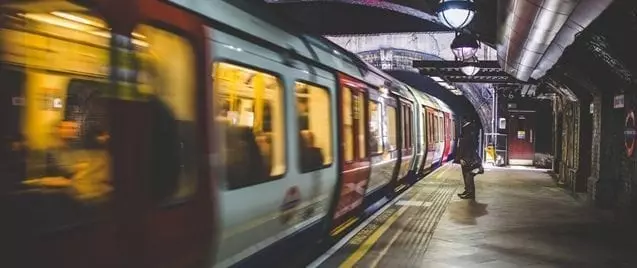
Live train surveillance and monitoring systems are being fast adopted by train operators across the globe to address the rising security challenges we face today. There are new adopters of train surveillance systems and there are upgraders to newer technology, however, even in 2017 we are yet to have a 100% deployment of these systems on all the public transit trains which is certainly a concern. In United States less than 50% of the mass transit trains have a video surveillance system onboard.
Real Time Monitoring
The ability to monitor the train from inside and outside in real time and stream the live video to law enforcement allows them to take actions in much more timely manner and have far better situation awareness.
Passenger and Employee Safety: As you would imagine for any public transport service, passenger safety is one of the important jobs of any video-based surveillance system. One of the most common kinds of traveler found on trains is the daily commuter. If daily commuters don’t feel safe on trains, they won’t use them, it’s as simple as that. Causing more traffic on the roads and higher carbon footprint. Video surveillance systems can be used as part of a wider effort to promote passenger safety as well as help reassure passengers that are using train services that their journeys are being constantly monitored for their safety and protection. Besides commuters employee safety is also of equal importance who can become target of vandalism or any type of aggression.
Crime and Terror Prevention: Unfortunately, we live in a world where the threat of terrorist attacks on public transport systems is a very real one. Past attacks on transport systems have proven that terrorists are capable of doing immense damage in relatively small numbers, and so, in order to combat this threat, video surveillance systems capable of enhanced analytical functions are being deployed to recognize potential threats and alert security services before an incident can take place. The same systems can also be used to prevent non-terror related crimes by acting as a deterrent in itself or recording video footage that could then act as evidence when prosecuting offenders.
Actionable Data Acquisition: With the ability to capture and record video footage comes the ability to analyze and evaluate visual data. Many train operators, as well as businesses and organizations in other industries, are using video surveillance systems (particularly IP systems) to monitor, evaluate and modify their operational and security procedures based off of the video data they collect through video surveillance systems. This data can then be used to improve security procedures both on-board and in-station as well as identify lapses or errors in operational processes.
This visual and sensor data collection solutions are also being used for collision avoidance, preventive maintenance and other applications.
EN50155 Compliance and More…
Majority of train operators looking for a cost effective and robust onboard system will go for an EN50155 compliant train video surveillance systems, that offer train specific rugged features to protect the system against environmental factors such as high/low temperature, shock, vibration, power surge, humidity and water splash.
Besides these rugged environment features there are a number of other requirements that transit authorities are looking for today, such as, support for IP as well as Analog cameras in the same NVR. Support for H.264 and H.265 encoding, facial recognition feature in the VMS, removable storage, Built-in GPS/QZSS/GLONASS with ADR for navigation and location, Video ports for Digital Signage and Infotainment among, to name the main ones.
Train Security in Future
There are no shortage of reasons why train operators would want to deploy on-board train video surveillance systems. Protecting the individuals that use their service and preventing incidences crime and terror are the top priorities of public transportation services and the use of robust train surveillance systems, both IP and Hybrid, is an essential tool in reaching that objective.
In the future, train surveillance look set to continue to play a key part in security operations as more and more advanced software and hardware becomes available to build in and expand on these systems. Advances in facial recognition software, for example, could lead to video surveillance systems tracking all registered employees in a station for performance and safety reasons or running criminal background checks on passengers reported as acting suspiciously in order to try and prevent crimes before they happen. Key to drive transit authorities to advanced train surveillance lies in the cost effectiveness. Hybrid x86 train surveillance systems (supporting both IP/Analog cameras) built with latest generation of off the shelf components and with industry specific ruggedness, will ensure that the operators will get the maximum out of their investment while providing reliable and uninterrupted advanced onboard security.